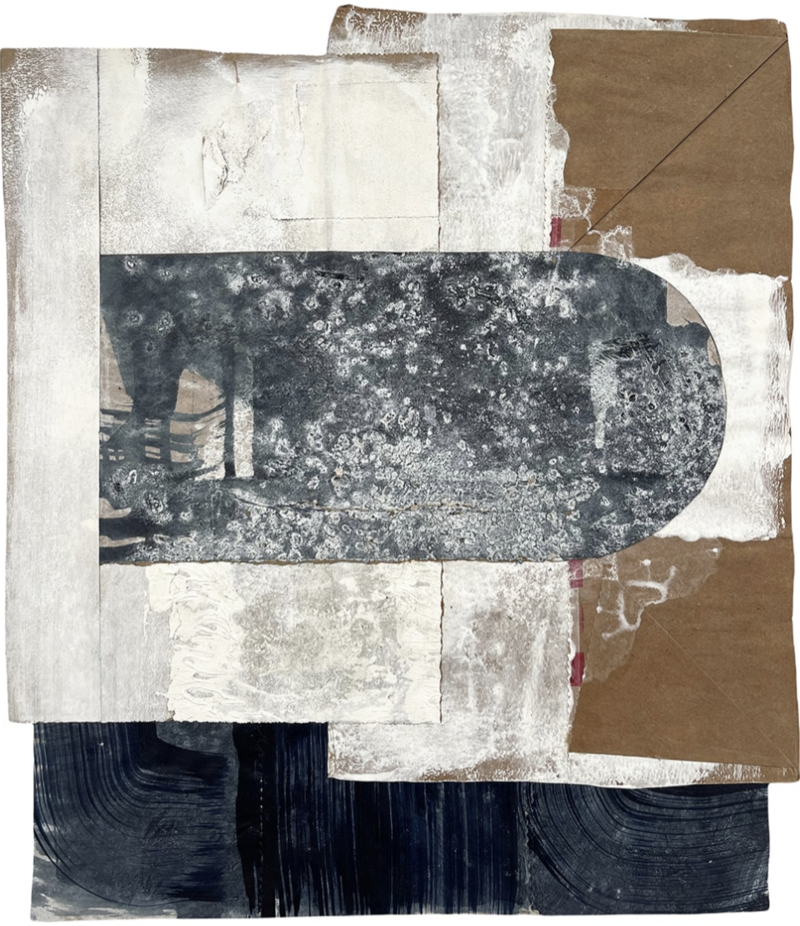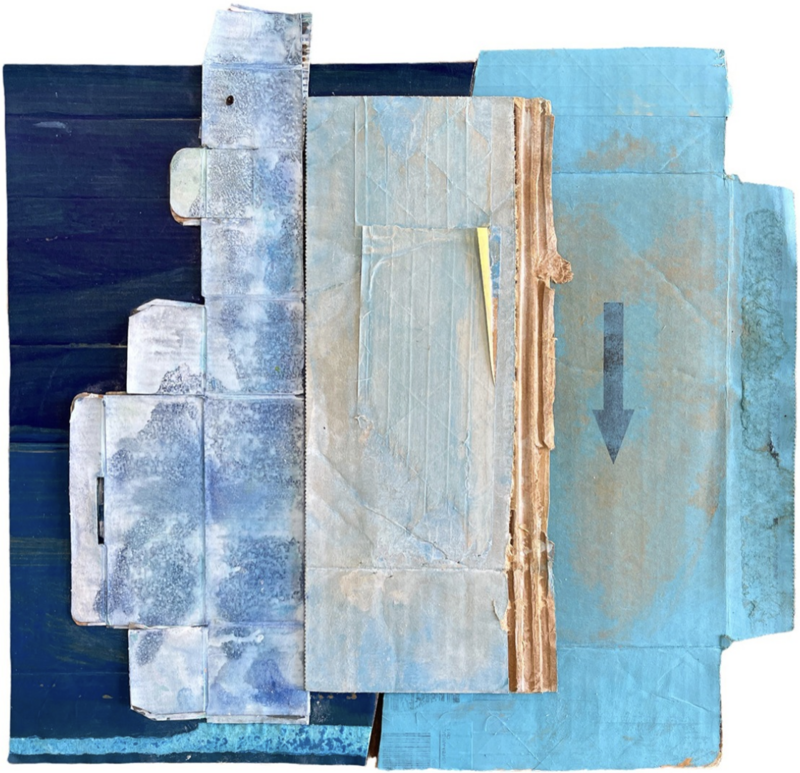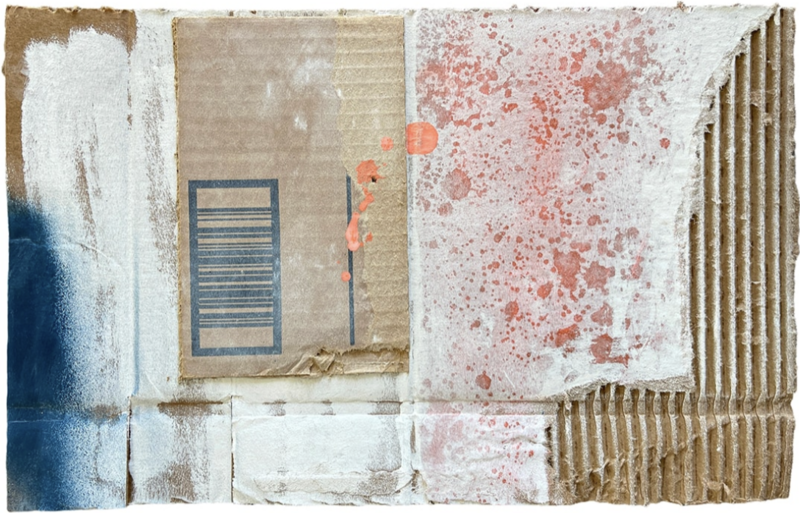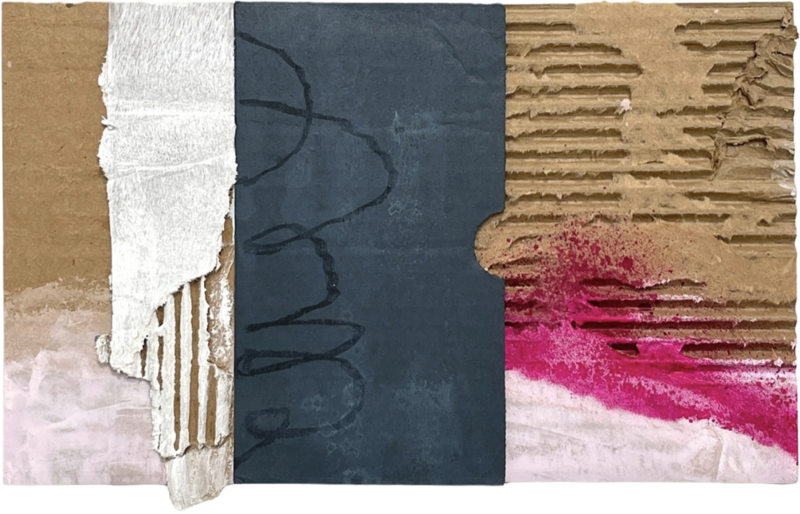This artist uses her artwork to give new life to discarded paper, boxes, and bags.
Artwork Archive's Featured Rebecca employs a broad range of sustainable practices and natural materials to create mixed media works as an Eco Artist.
Galvanized by the sustainability movement to protect our planet, her work finds a home in the space where art and environmentalism collide. Whether it's painting on paper she made by hand or on recycled grocery bags, Rebecca tells a story through rich, organic colors foraged from her outdoor adventures.
"I carry a deep respect for the wild, untouched lands and hand-crafted art," she says. "My work pays homage to the natural beauty of this great land that I'm surrounded by."
Through her commitment to a creative consciousness, Rebecca Youssef is guided towards a more sustainable art practice. When she's not in the studio, she has her hands in either paper pulp or soil, or she's out working on her native tree reforestation project in the Santa Monica Mountains.
Artwork Archive had the chance to chat with Rebecca Youssef about her sustainable process, her quest to create a waste-free studio, and how Artwork Archive makes her art career more manageable!
You can see more of her work on Discovery and learn more about her art practice below.
Rebecca Youssef, Smolder, 7.75 x 12 x 0.25 in
Do you have a favorite or most satisfying part of your process?
My favorite part of my art process is when I get to that point while working on a piece where things start coming together.
I powered through what I call “the messy middle” and now things are starting to fall into place. It’s like I can see a light at the end of the tunnel!
You give new life to discarded materials. What inspired you to focus on this intersection of art and environmentalism?
Although I have always used found objects in my work, it wasn’t until I studied to become an arborist a few years back that I decided only to use repurposed materials.
I loved working with paper, but that directly conflicted with my love of trees and my advocacy for urban reforestation.
I’m also a cultivator of California native oak trees, and I didn’t want to make art at the expense of any trees. Today, I primarily use recycled paper grocery bags, discarded cardboard, and paper I make by hand from junk mail.

Rebecca Youssef, Winter No. 10, 14 x 12 x 0.1 in
What impact do you hope your work will have on those who view it?
Through my purposeful use of materials, I hope to stimulate reflection on our reciprocity with nature.
We must sustain what sustains us. It is my fundamental belief that beautiful things can be made by working with the planet, not taking from it.
Your commitment to a more sustainable art practice is admirable. Can you share some specific practices/ways you’ve made this shift?
Although I’m not there by any means, having a sustainable, zero-waste studio practice is my goal.
I don’t purchase any commercially made substrates or canvas. Repurposing and upcycling items destined for the recycle bin and/or landfill has become the cornerstone of my work.
I’ve also been busy making botanical inks from black walnuts, oak galls, and avocados–although I haven’t moved entirely away from traditional paints.
Striving for a sustainable art practice keeps stimulating creativity, experimentation, and resourcefulness.

Rebecca Youssef, Which Way Are We Going? 16.25 x 17 x 0.25 in
What does success as an artist mean to you?
The definition of success for me keeps changing.
Currently, I’m more concerned with the work continuing to energize and motivate me to keep propelling forward.
When the work feels inspired, I find the other stuff falls into place.
How do you handle creative blocks and find the motivation to keep creating?
Creative blocks don’t come too often, but when they do I take a break from the studio for a bit. I’ll go feed my other passion in life, planting trees.
Shifting gears to something else for a time allows me to recharge and mentally reset.

Rebecca Youssef, Bonamia Grandiflora (Florida bonamia), 40.5 x 43.5 in
Why did you decide to use Artwork Archive to inventory your artwork and manage your art business?
I started researching different platforms for cataloging artwork since I drastically outgrew using antiquated spreadsheets.
I gave Artwork Archive a trial run and found it easy to navigate and useful in many areas.
How do you use Artwork Archive on a daily basis?
I have hundreds and hundreds of cataloged works on Artwork Archive. I’m uploading new pieces every week.
I love being able to create private, curated viewing rooms and Tear Sheets for clients.
It’s also handy to keep track of art going to shows or on loan to designers as well as manage my revenue and expenses. I’ve also created invoices and labels! It’s a one-stop shop.
Artwork Archive Tip:
Present yourself professionally and make a good impression with your clients by using some of the many reports Artwork Archive has to offer. In a couple of clicks, generate a Tear Sheet to show your clients readily available work. Or, curate a special collection to your VIPs with a customizable Private Room!

Rebecca Youssef, A Dime A Dozen, 8.5 x 13.5 x 0.25 in
What advice would you give an artist who’s just starting out in their professional career?
Document and catalog your work—all of it!
I don’t have images of a lot of the work I made in art school and I wish I did. Artwork Archive has made documentation so easy, plus they keep adding new features that help me run my art business.
Rebecca Youssef uses Artwork Archive to keep track of her artwork, create Private Rooms, send professional reports to clients, and a lot more.
You can make an online portfolio, catalog your artwork, and generate reports like inventory reports, tear sheets, and invoices in seconds with Artwork Archive. Take a look at Artwork Archive's free trial and start growing your art business.


.png)



228c.png?1445061121)

_(1)ba3d.png?1645052889)
